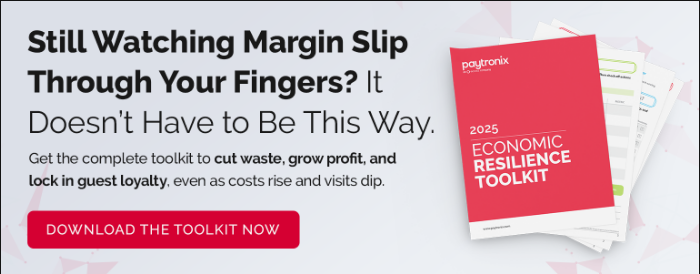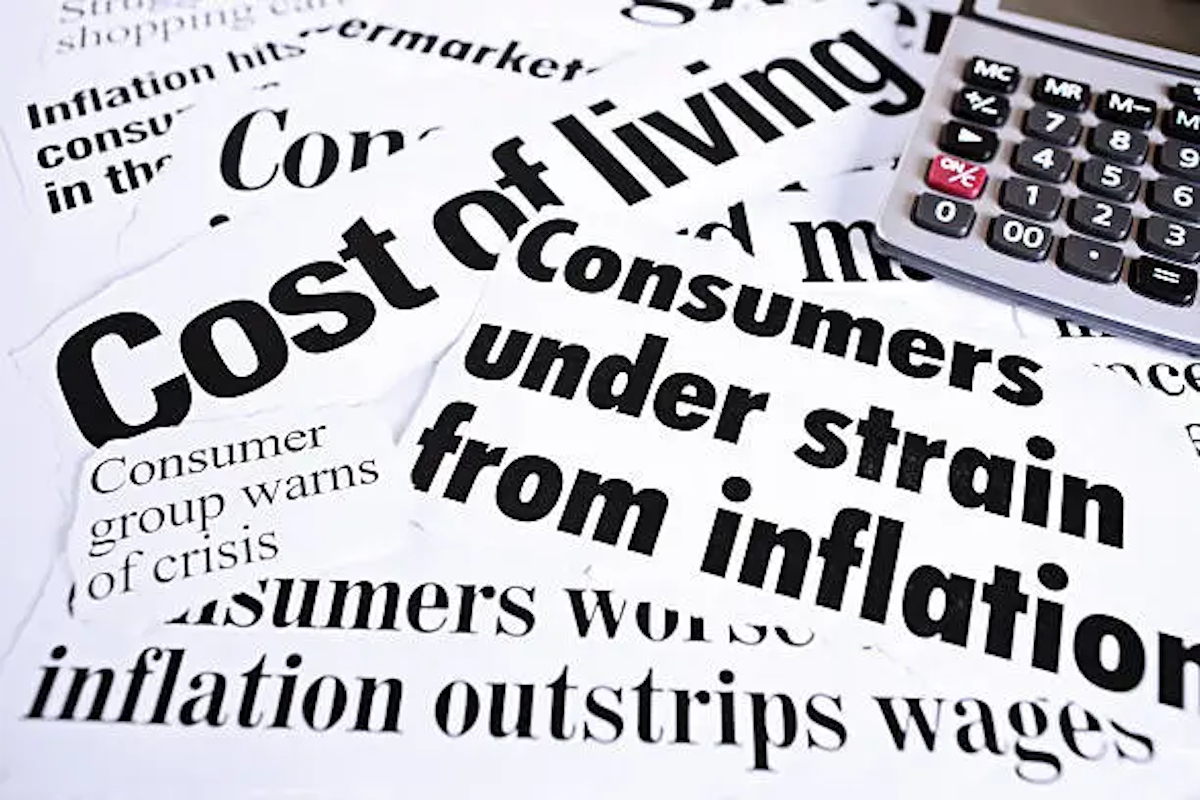14 min read
7 min read

How Consumer Discretionary Spending Affects Restaurants
Economic situations, whether downturns or booms, play a significant role in shifting consumer spending patterns. Metrics like personal consumption expenditures provide insight into how households adjust their restaurant budgets and preferences.
As consumer sentiment and confidence fluctuate, businesses' choices often reflect these shifts, showing how much people are willing to pay for eating out.
Consumer Discretionary Spending and Dining Out
Discretionary spending refers to the average amount of money left over after covering basic needs such as housing/mortgage, utilities, transportation, and groceries. When people have more disposable personal income, they’re more likely to afford dining out, opting for higher-end or more frequent restaurant visits.
On the flip side, in times of economic uncertainty or rising costs, consumers tend to cut back on dining out, especially across discretionary categories, opting for more budget-friendly options like fast food or casual dining. Indicators such as labor statistics also provide context for these shifts, helping restaurants gauge when consumers will likely tighten or loosen spending.
Casual dining also benefits from higher discretionary spending, as consumers are more willing to enjoy occasional meals out. Meanwhile, quick-service restaurants (QSRs) maintain steady customer traffic, as consumers continue to look for affordable, convenient options.
Consumer Discretionary Spending Chart: Where Are People Spending?
While inflation and shifting economic conditions continue to impact household budgets, many consumers still prioritize experiences like dining out, travel, and entertainment. However, the way they spend—and how much—has changed.
Recent data by McKinsey and Deloitte highlights how consumer spending intentions have shifted in 2025, with households focusing more on value-based purchases and experiences. Food away from home continues to represent the highest percentage of discretionary spending for most consumers.
The table below also highlights how rising costs, value-based behaviors, and economic concerns shape indulgent and cost-conscious spending patterns.
|
Category |
2025 Spending Share |
Change from Previous Year |
Trends |
|
Food Away from Home |
28% |
+2% |
Increased spending on quick-service and casual dining; premium dining reserved for special occasions. |
|
Travel & Leisure |
22% |
-3% |
High-income households maintain travel spending; others opt for local trips due to economic concerns. |
|
Entertainment |
18% |
+1% |
Steady interest in streaming services and local events; cautious spending on big-ticket items. |
|
Personal Care & Wellness |
12% |
+2% |
Growth driven by health-conscious choices, increased demand for personal care products, and social media influence. |
|
Apparel & Accessories |
10% |
-1% |
Consumers prioritize essential clothing purchases; luxury items see reduced demand. |
|
Home Improvement |
10% |
+1% |
Focus on DIY projects and home upgrades as consumers spend more time at home. |
3 Key Restaurant Spending Trends to Watch in 2025
Spending trends in the restaurant industry are shifting, with several positive transitions on the horizon. As consumer preferences evolve, these changes create new opportunities for businesses to adapt and thrive in 2025.
1. Increased Demand for Sustainable and Ethical Dining
Consumers are increasingly seeking dining options that focus on sustainability. There's a growing preference for locally sourced, organic, and plant-based dishes. Eco-friendly packaging and awareness of carbon footprints are also becoming important. For more information, review our 2025 Loyalty Report to learn about sustainability trends and the strategies restaurants and c-stores can use to become market leaders.
2. The Shift Toward Value-Based Dining
As rising prices impact daily expenses, customers are prioritizing value over volume. Consumers with a higher personal savings rate tend to reserve restaurant visits for special occasions or value-based promotions. Additionally, they seek smaller portions made with higher-quality ingredients, and restaurants are responding with more flexible costs, loyalty platforms, and well-priced promotions.
3. The Rise of Subscription-Based Dining Programs
Meal subscription services and restaurant membership programs are gaining traction. These models offer consistent revenue and improve customer retention, providing exclusive benefits and deals for subscribers.
For example, Panera Bread offers the Unlimited Sip Club, a monthly or annual program that includes unlimited hot and iced beverages plus a $0 delivery fee. The predictability of these programs is an important driver of loyalty, as leisure spending is still considered a treat by some consumers.
Technology’s Role in Consumer Spending Trends
Each generation interacts with tech differently, from online ordering and loyalty apps to payment methods, so restaurants must build strategies that reflect these habits. Understanding these digital preferences can help improve your customer experience and influence where and how people choose to dine.
3 Mobile and Contactless Payment Trends
Mobile and contactless payments are becoming essential for improving the customer experience. They offer a quicker and more seamless way to complete transactions.
1. Increase in Digital Wallets and Tap-to-Pay
Mobile payment solutions, such as digital wallets and tap-to-pay technologies, transform how consumers pay for meals. Gen Z, in particular, is driving this shift with their preference for contactless transactions. This trend is not only about convenience but also the speed of payment, which enhances the overall dining experience.
2. Security and Customer Trust
As mobile payments become the norm, restaurants must focus on ensuring the security of these digital transactions. Customers are increasingly concerned about the risks of online fraud, making trust a critical component. By implementing robust security measures, eateries can reassure their customers and foster loyalty.
3. Streamlined Payment Processes
The demand for a seamless payment process is growing, with consumers seeking faster, hassle-free methods. Restaurants are responding by integrating mobile payment systems that allow customers to pay from their phones, either directly at the table or on an app, minimizing wait times and enhancing overall satisfaction.
AI-Powered Personalization in Restaurant Marketing
Many companies are using AI tools to better understand customer behavior and make smarter marketing decisions—and restaurants are no exception. Through predictive analytics, you can track spending habits, visit frequency, and order patterns to tailor promotions and offers in real time. Instead of static rewards, AI-driven systems adjust to how each customer spends—offering personalized deals that match their preferences and increase return visits.
Adapting to Consumer Spending Trends in 2025
Understanding consumer spending is only part of the picture: you and your team must act on that insight. In 2025, success will come from aligning business operations with consumer behavior, leveraging data and experience to guide decisions that boost revenue.
Leveraging Data to Optimize Pricing and Promotions
Data helps restaurants adjust in real time. By analyzing sales trends, item performance, and transaction patterns, operators can fine-tune food prices—not just seasonally but also by time of day or day of the week. Peak-hour pricing and slower-period discounts are becoming more common, especially in high-traffic locations.
Improving the Guest Experience to Increase Discretionary Spending
Restaurants that invest in more than just food—such as table-side tech, efficient service models, or intentional ambiance—see higher per-visit consumer spending. Experience-based features like curated playlists, open kitchens, or visible food prep can influence how guests perceive value. Even how orders are presented or delivered contributes to return visits.
Key Takeaway: Ultimately, the more your restaurant taps into a personal connection and guest engagement, the more you gain from each discretionary dollar.
Frequently Asked Questions About Consumer Spending Trends
Understanding how consumer behavior is shifting in 2025 can help restaurants stay ahead. Here are some of the most common questions operators and industry professionals are asking:
Is consumer spending slowing down?
According to recent reports and Federal Reserve Bank insights, consumers are becoming more selective, often driven by rising prices and uncertainty about future economic conditions. While essentials remain steady, discretionary activities like dining out see more fluctuations.
What are people spending more on in 2025?
Food away from home, travel, and entertainment remain top discretionary priorities among half of the surveyed consumers in 2025. Experiences still hold value, particularly when bundled with convenience or exclusive perks.
What are people spending less on in 2025?
People are likely to spend less on non-essential luxury goods and services. In the restaurant industry, this means a shift away from more frequent visits to full-service restaurants, as consumers become more price-sensitive due to economic pressures.
What age group currently has the most to spend?
Older generations like Gen X and Boomers tend to have more discretionary income on average. However, Gen Z and Millennials spend more frequently, especially on convenience and mobile-first services.
Will grocery prices ever go back down?
While grocery store prices may stabilize over time, they will unlikely return to pre-pandemic levels due to factors like inflation, fuel prices, supply chain challenges, and rising labor costs. Consumers might continue to seek value-driven solutions, such as buying in bulk or choosing store brands.
The Future of Consumer Spending in Restaurants
As consumer behavior shifts in 2025, staying agile is essential for restaurants. Discretionary spending patterns are evolving—driven by economic situations, generational habits, and technology preferences.
For restaurant owners and operators, that means looking beyond just pricing. Investing in the guest experience, digital innovation, and sustainable practices will not only meet current expectations but also help build long-term profitability in a competitive landscape.
Check out our guide to discover why loyal customers continue to spend, even during challenging economic times. Are you ready to optimize your pricing, marketing, and loyalty program enrollment? Book a demo to explore Paytronix solutions and data-driven tools designed to enhance customer engagement.








